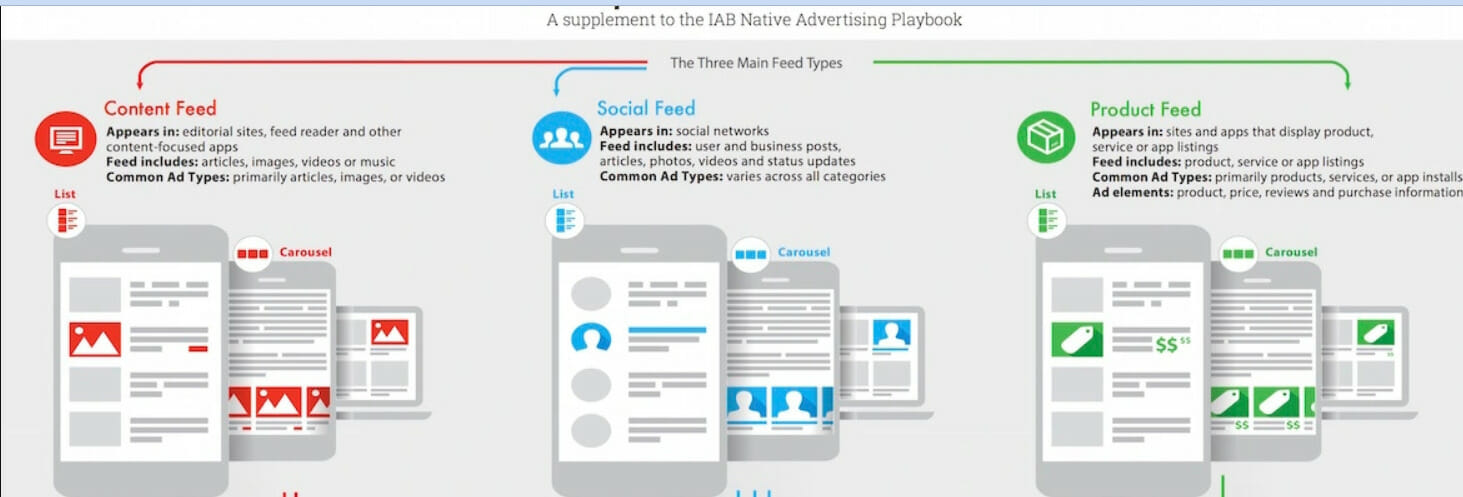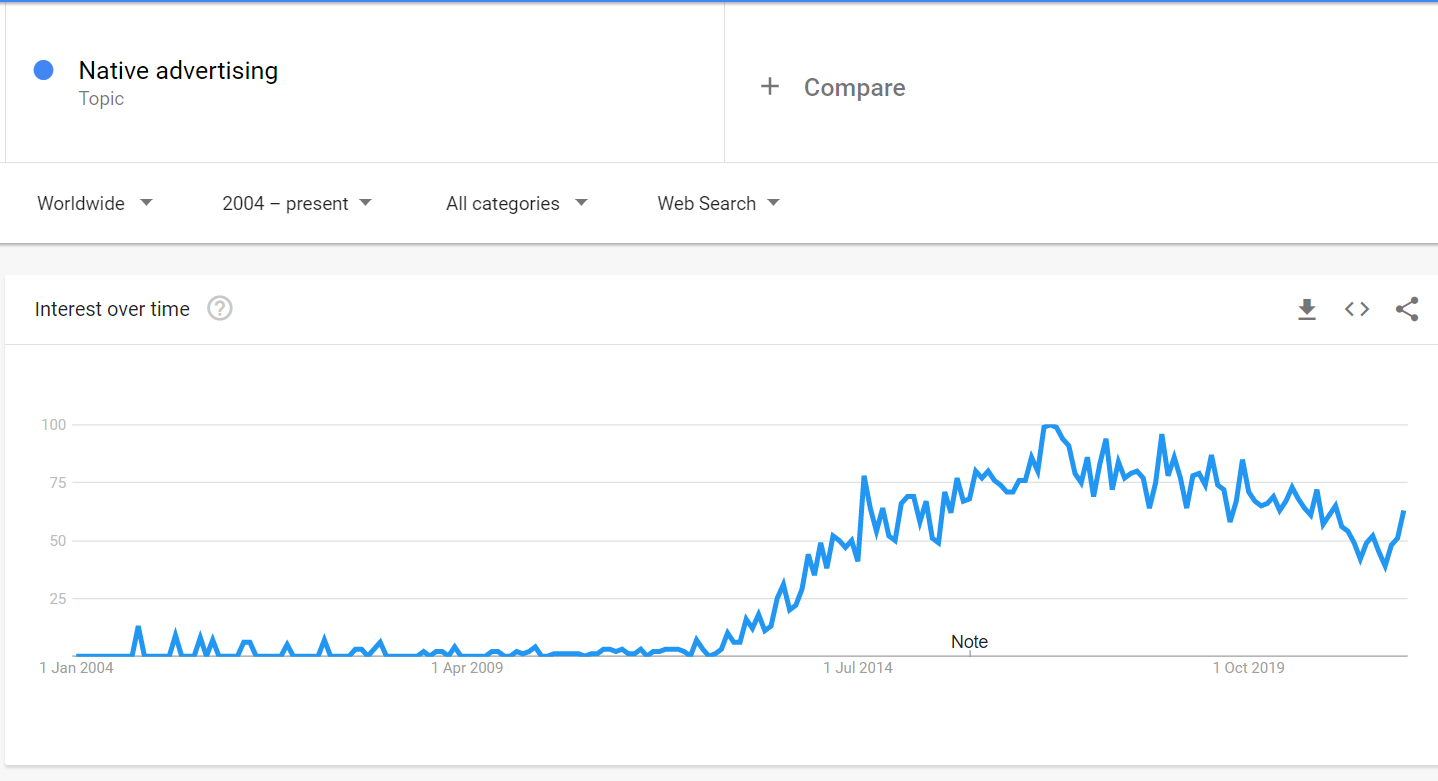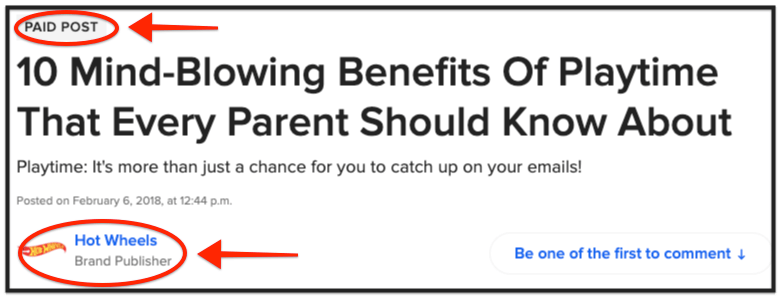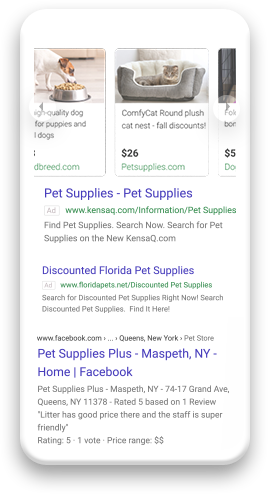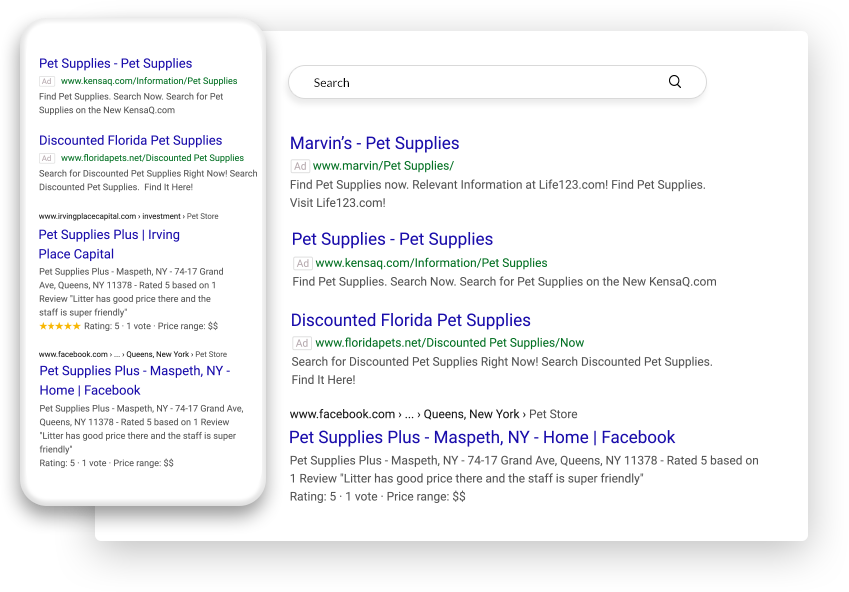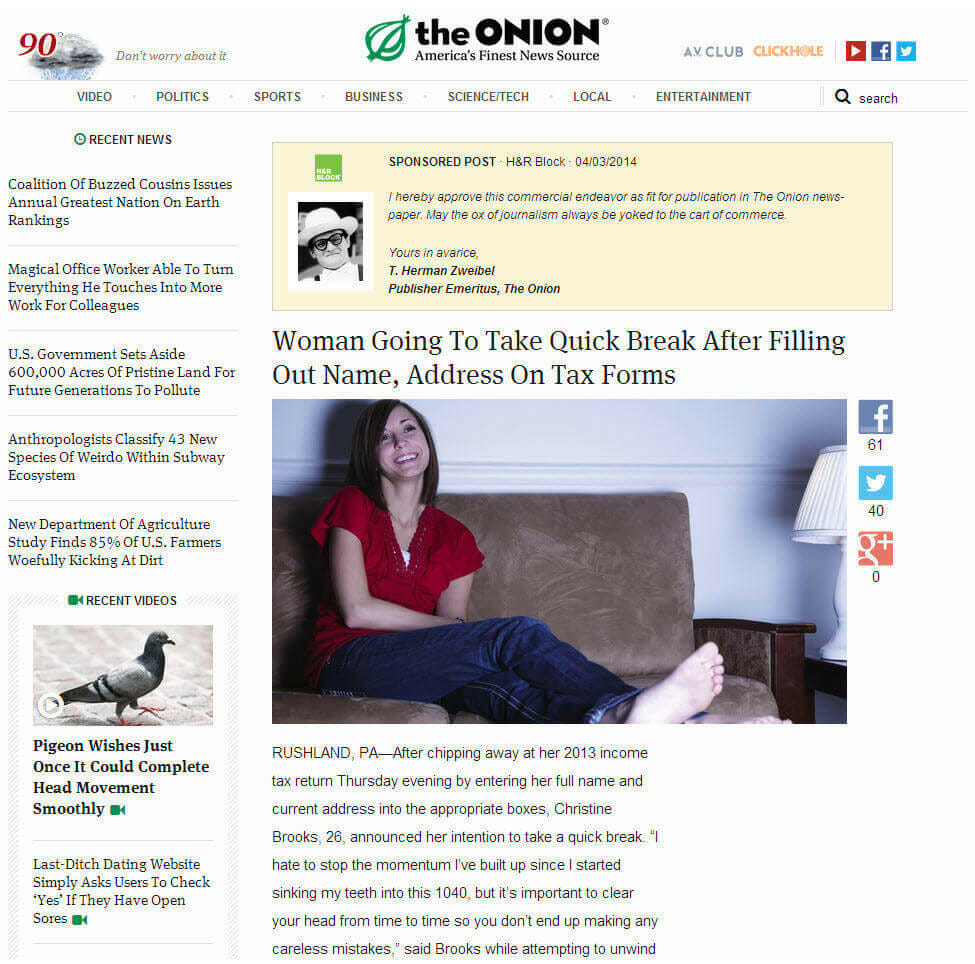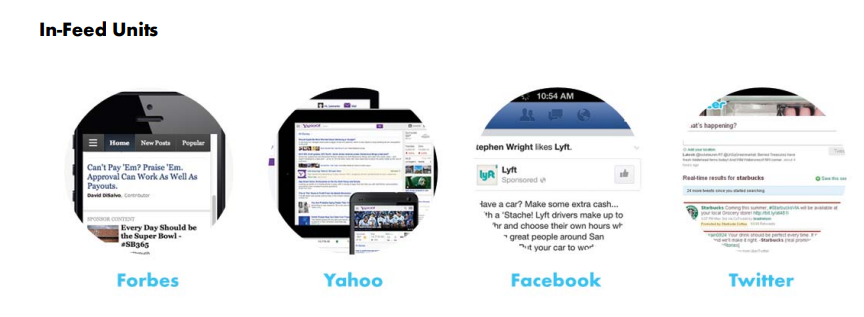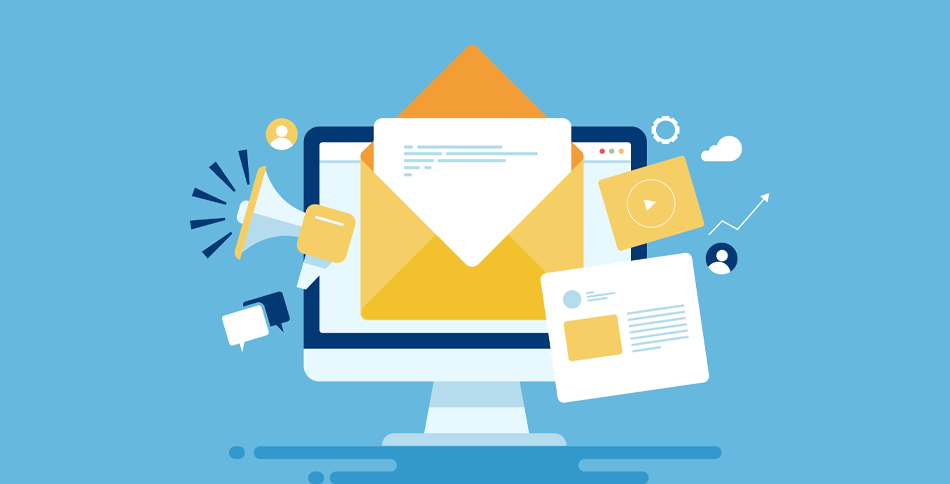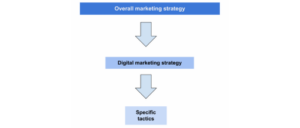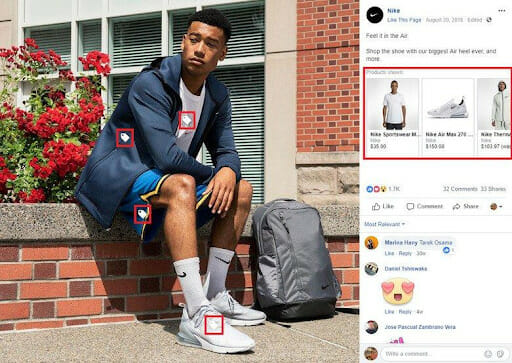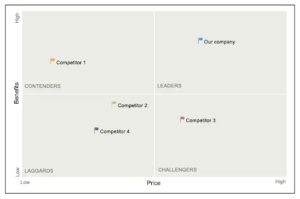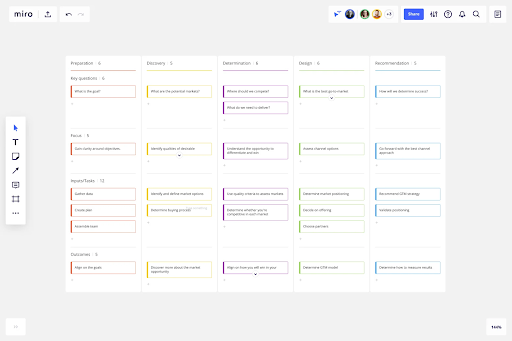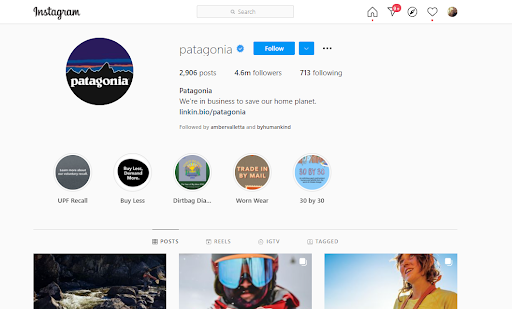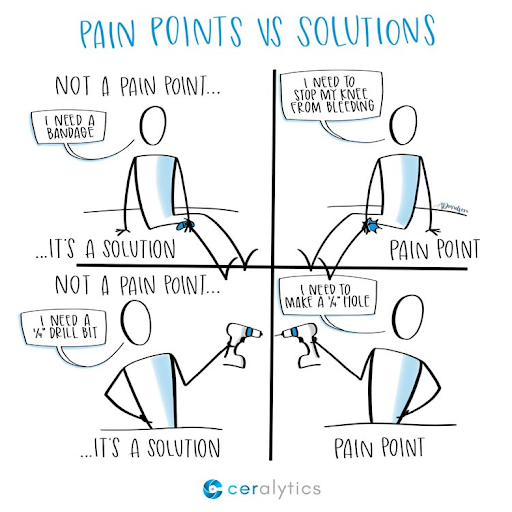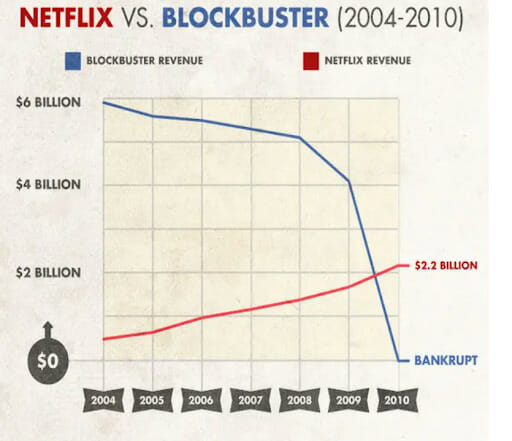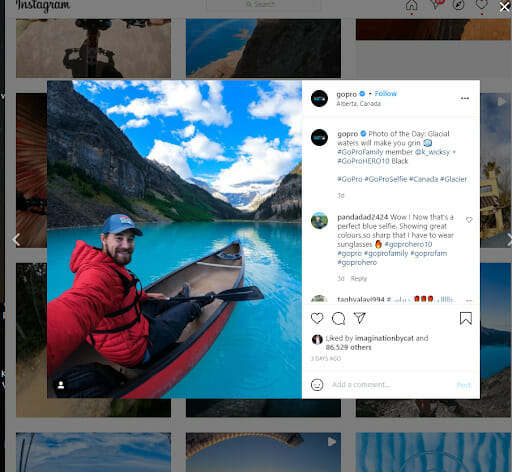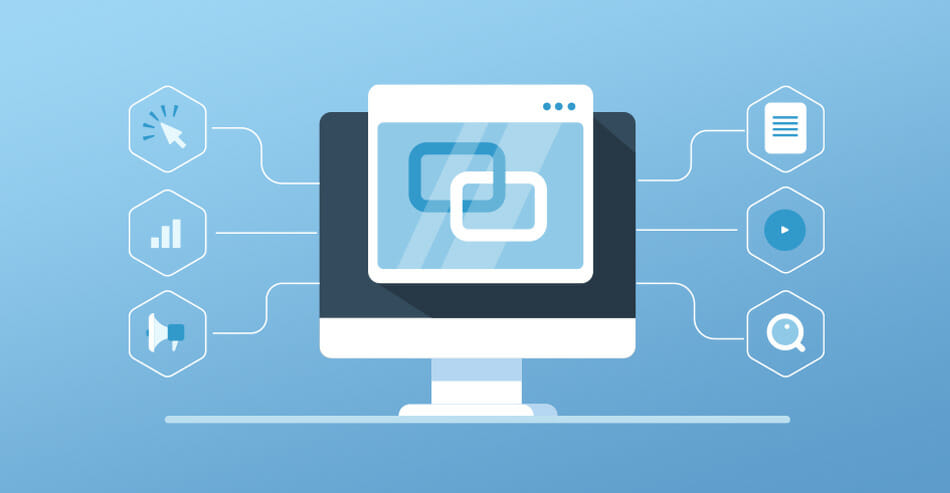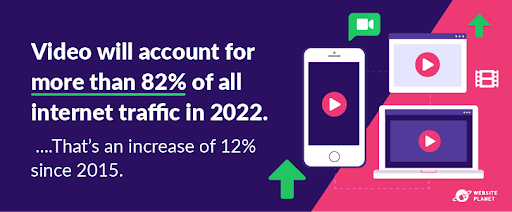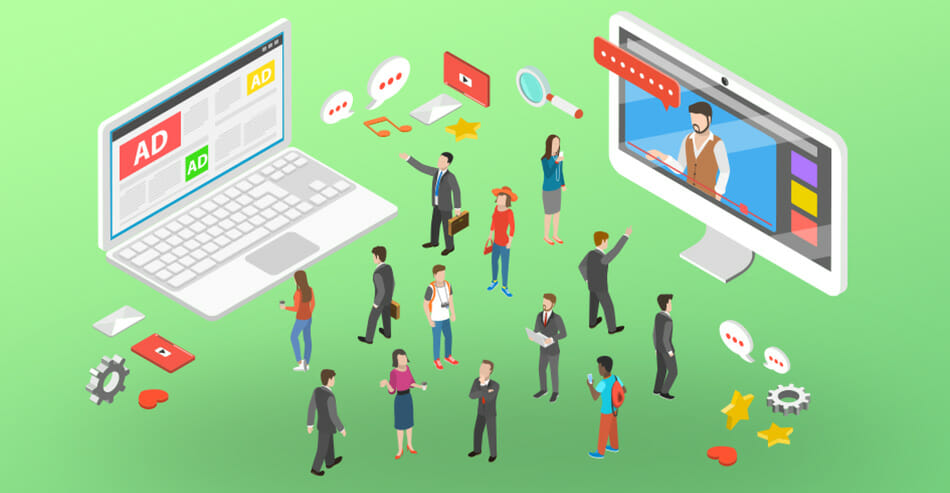
Native Advertising Explained – What Is It and How It Works
Native advertising is a digital strategy focused on delivering a better user experience via unobtrusive ads. When you provide value to users, it results in better user engagement and conversions. This post will explain a guide to native advertising and how to make the most of this strategy.
In this post
What is Native Advertising?
| Native advertising is the practice of placing paid ads that blend with the look, feel, and function of the digital property in which they appear. |
You can find native ads as recommended, or sponsored content on a website, or in social media feeds. The thing with native ads is that they don’t look a lot like ads. They look like part of the page, which is their best advantage because they don’t disrupt the user experience. A native ad enhances the reader experience by adding value without sticking out as a sales advert.
Native advertising offers brands a way to connect with users more naturally. The native advertising’s contextual relevance results in native advertising producing high-click-through rates and conversions.
Native ads are advertising units that intend to draw the user’s attention while enhancing the user experience. You can find native ads:
While Scrolling Your “Feed”
You can find these ads while scrolling through your social feeds. For instance, the ads that appear before or after stories or reels.The feed may include user generated content (USC), business posts, articles, photos or videos.
Ads from Search and Promoted Content
The Interactive Advertising Bureau (IAB) groups these ads on what they call “product feed” They appear in searches and product, service or app listings. Common ad types include product or services ads.
Inside Content Related
The content feed ads appear like sponsored posts, editorial content that may include images or videos. They appear on editorial sites and recommendation platforms.
Source: IAB
How do native ads work?
Native ads are subtle. The idea is that users will barely notice they are paid ads; and when they do, the ads don’t bother them. The interest in native advertising started growing in 2012, because of the brands’ need for non-disruptive advertising.
Source: Google Trends
In native advertising, suppliers (publishers) offer their audience, reach, and quality of content to SSP, ad networks, or advertisers, with the aim to monetize their sites. On the demand side, advertisers and demand-side platforms (DDP) look for the best fit to reach their target audience and achieve their goals.
How can you tell if an ad is native?
That’s the paradox with native ads. Because they look like regular content, how can you tell it’s an ad? For instance, you clicked on an article for “Best Hikes Near Prague”, which led to a post review on the “Brand X hiking boots review”, sponsored by the boots brand. The boots brand pays the publisher of the article for your click. To ensure consumers are not misled, there is a requirement to disclose the content is actually an ad.
You may see some of the following features in a native ad
“Paid Post”, “Sponsored by”, “ Partnered with”, “Promoted”, “Powered by”. These phrases indicate sponsored content.
Other times, a small icon on the top corner can show that is a paid ad. Or you can see the word “Sponsored”. This disclaimer is part of native advertising best practices.
Native advertising channels
Native advertising can be run manually or programmatically. Regardless of how you choose to manage it, you can run native advertising across three main channels:
Search
The sponsored search results that you see on top of your search results. Engines like Google or Bing started serving native ads in the form of sponsored search results.
Publishers can also insert a SERP (search engine results page) on their domain.
Social
Facebook and Instagram streamlined native in-feed and carousel formats. In-feed ads appear in between social media posts or in your news feed.
Open Web
There are content discovery platforms that serve curated content recommendations and in-feed ads on popular publisher websites.
Types of native ads
The interactive advertising bureau (IAB) identified six types of native advertising units.
- In-Feed Units
In-feed units are paid ads that appear in-line with other content. When you see sponsored posts that appear in social media or in publisher’s sites like Forbes, for example, these are in-feed ads.
For example, here you can see an in-feed ad from PayPal on Entrepreneur.com
- Paid-search units
Paid search are those ads you can see in the coveted position zero in search results. Paid search results look like organic search results.
- Promoted listings
These native ads, appear usually when you are browning for purchasing on an e-commerce site. They are paid by brands and look like any other organic listing.
- Display ads with native elements
This type of native ad looks like a display ad, but they are different from a regular banner because they are contextually relevant to the meda they appear on.
- Recommendation widgets
You can also find native ads on publisher sites, social media, and search engine results. Recommendation widgets are often at the side of a page or at the end of a post. These ads recommend additional content or products that you may like.
How to Develop Native Ads?
Native advertising is more popular every year, as companies realize its benefits for improving the user experience (and their bottom lines). That’s why organizations are spending more money on native ads.
But, how can organizations ensure they spend wisely and get the best results for their native advertising strategy? Here is how to develop a great native advertising strategy:
1. Set your SMART campaign goals
As with every strategic plan, the first step is to know where you want to go. Clearly define what do you want to achieve. For example, if you want to generate leads, getting more sales, increasing website traffic, or more. Ensure your goals are SMART (Simple, Measurable, Attainable, Realistic, and Timely). Be specific so you can then track the success of your strategy.
2. Define your target audience
Once you know what do you want to achieve with your campaign, you should understand who is the receiver of your ad. You may have an idea of who is your audience, according to your buyer personas. Factor location, age, gender, and interests to narrow your audience. However, don’t be too narrow, as native ads are a great way to show content to new audiences. The right level of targeting can ensure your ads get to the right users at the right time.
3. Select where you will publish
No less important to know who to publish, is where to publish. As part of your native advertising strategy, you may choose to advertise through an ad network or directly with the publisher. If you choose to go the direct way, examine the publisher’s reach and the size of their audience. Most importantly is to check how relevant is their content for your users. Think as your reader would do, and select publishers that can provide value.
Leveraging an ad network produces more accurate results. An ad network evaluates thousands of publishers and finds the most relevant for your brand. And all of it happens by the time the publisher page loads, thanks to the magic of programmatic advertising.
4. Build attractive ads
The best strategy cannot succeed if the ads are not attractive to the user. The ads need to catch the attention of the user and encourage them to click them. Keep in mind to test several combinations (A/B testing) until you find out which ad is better for your campaign.
5. Define and allocate your budget
Assigning a budget for the campaign can make it or break it. How much your campaign will cost will depend on how much do you spend on your campaign items, like your cost-per-click. Identify what is your ideal CPC and how much is your spending limit.
6. Monitor, test and adjust.
Once you launch the campaign, you should track the performance of your ads. Test headlines and images, the KPIs like number of impressions, clicks, and conversions.
These six steps can help you design a successful native advertising strategy.
Read more: Social Media Strategy Statistics & Trends
Best Practices for Native Advertising
1. Leverage other media types like podcasts and video
Static and dynamic ads are the most popular, but audio and video are increasing in popularity. Podcasts, in particular, are increasing in popularity. Podcasts’ ad spend is expected to rise to $1.6bn by 2022. Podcast ads are accessible and unintrusive because. Most users are doing other things when listening to podcasts. Therefore, when you add native ads to podcasts, they integrate with the content.
Video is another media that is increasingly popular. With the time people spend watching videos, video ads are proving to be extremely effective. As much as 78% of publishers get more traffic to their website by using video ads
2. Test often and accurately
Ads that blend with the surrounding content usually gets more clicks. Instead of standing out, they keep users on the site for longer. These days, native ads are not only placed on websites but also on e-commerce sites, mobile sites, and applications. To understand the impact of each ad, it is important to measure and track the right KPIs. Besides common metrics like impressions and clicks, measure the engagement of the users, comments, and shares.
3. Do your research and focus on the clicks that matter.
Ads shown in the search result deliver more value to users because they align more with what the user is looking for. Since the user intent is high, you get more value out of each dollar you spend in the campaign. Do your research about what type of content attracts more your users.
4. Use influencer marketing
A recent survey found 84% of consumers make a purchase based on an influencer’s recommendation. As consumers spend more time on social platforms, they are exposed to influencers’ content. Most people listen to influencers because they trust their expertise in the product or category.
While influencers have been around for a few years, their impact is growing, and set to be worth $15bn by 2022. For 2022, there will be an increase in short-form video content, and brand media programs.
5. Don’t forget mobile ads
Their mobile is where users are most of the time anyway, so investing in native mobile ads is the sensible way to go. Unlike interstitial ads, native mobile advertising blends with the experience and enhances it. According to one report, native ads show 18% more purchase intent than display ads.
Best and worst examples of native advertising
Now that we know what native advertising is and best practices, let’s see some examples.
The 3 best native advertising examples
- The Onion’s Tax Ad
First, let’s start with a classic. Back in 2012, this well-known, funniest native advert starts entertaining from the headline: “Woman Going to Take Quick Break After Filling Out Name, Address on Tax Forms”.
Source
This advert is a textbook example of native advertising. The Onion created this piece for their client. At the time of publication, it was surrounded by the client’s (H&R Block) banners. It resulted in increased brand awareness.
- Clarins makeup and skincare
More recently, The campaign of Clarins focuses on paid posts and blending content for mobile with the “Seven plant extract to boost your makeup routine and skin”
The article doesn’t look like an ad at all. The campaign delivers value to customers and fits seamlessly with the media where it appears. The article subtly promotes the advantages of Clarins, directing users to the promoted product.
- 8fit Fitness
8fit is an app that offers custom home workouts. Its native ads campaign appears in several premium publishers’ websites. They have different images, headlines, and content according to the media they appear, combining video, image, and sponsored content.
When you open the video that promises to burn 300 calories in 9 minutes, it drives you to download the 8fit app. Fitness lovers then can get access to workouts, meal plans, and progress tracking. The ads don’t feel like ads.
Worst Native Advertising Campaigns
Here is the Hall of Shame: “Will millennials completely shun the office?”. The New York Times.
Yes, at the top of the hall of shame is the New York Times. That’s proof that everybody makes mistakes.
This Dell sponsored post misses the mark on engaging the target audience (millennials). The language is not aligned with the New York Times editorial content. Therefore, it doesn’t hit it.
Pros of native advertising
For advertisers
- Branded native content generates more trust from users. From Generation X and beyond, these audiences trust sponsored content more than traditional adverts. This type of content resonates with young adults because it is more entertaining and engaging.
- Native ads generate more click-through rate than display ads. Native ads perform well for advertisers in several niches.
- Builds brand awareness. With native advertising, it is easier to increase your brand awareness, on average 53% more views than traditional advertising.
- Optimizes the targeting. Native can contextually target specific audience segments. As an advertiser, you ensure the ad reaches the right user.
For publishers
- Higher engagement. Ads are more relevant, which doesn’t disrupt the user experience, resulting in a higher engagement and click-through rate.
- Better eCPM. Native ads usually bring high eCPMs, impressions, and engagement, resulting in more attractive placements for high-paying marketers.
- Users stay longer on the site. Resulting in users being more engaged with the brand and content.
For users
- More value. Native advertising is less “salesly” and provides useful information to users. Users then consider native advertising as more valuable than traditional ads.
- Better experience. Native ads are more user-friendly. They integrate with the surrounding content giving a more natural experience to users.
Native advertising challenges
Native ads to have a lot of advantages. That being said, there are some use cases where native advertising can be challenging.
- It can be tricky to measure. While some KPIs are not that hard to measure, measuring the ROI (Return on Investment), impact, and effectiveness of the campaign.
- If you don’t leverage an ad network, it can be time-consuming. Creating native ads can be more complex than traditional ads, and may require many actors.
- Choosing the right tool can be daunting. Any organization new to native advertising can get confused by the many tools available. Should you choose an ad network? An SSP? An ad exchange? CodeFuel makes it easy for you with an all-in-one monetization platform designed with publishers in mind. Leverage premium advertisers and publishing sites with an easy-to-use, high-yielding solution.
Is native advertising effective?
Native advertising is generally more effective than traditional display ads. Here are some statistics to prove it:
|
Consumers pay more attention to native ads
|
|
Native ads generate 9% more brand affinity than banner ads |
|
32% of consumers share native ads vs. 19% sharing of display ads |
What drives marketers to use Native vs. Traditional Ads?
What is Programmatic Native Advertising?
Programmatic native advertising is designed to make it easy for advertisers and publishers to buy and sell native ads. Brands and agencies use a demand-side platform (DSP) to set a budget and requirements to publish your ads. Publishers, on the other side use a supply-side platform (SSP) to sell their ad inventory. Both publishers and advertisers get matched up in real-time via native advertising platforms.
How to Choose The Best Native Advertising Network
Here are six factors to consider when choosing a native advertising network:
- Audience: Check that the native advertising network’s reach covers your target audience. This includes verifying the locations where the platform drives traffic from. If your product is targeted to English-speaking countries, your ad network reach needs to target those too. Look at the niches and industries they cover.
- Ad formats: The more variety of ad formats the ad network covers, the better. Choose a solution that can give you in-feed, recommendation widgets, mobile native ads, etc.
- Targeting options: Different tools deploy different technologies. When you compare platforms, pay attention to the targeting options they offer. While one platform can let you select publishers, others won’t give advertisers that much control.
- Bidding models: Each platform offers different bidding models. For example, manual or enhanced cost per click, cost per action, cost per view, cost per mile.
- Reporting: Consider how the system will report performance. Choose a solution that offers the most information. Ask which KPIs can you measure, if you can export and customize reports, and what are the filters available.
- Price and requirements: The signup price needs to align with your advertising budget. Before signing up, check the bidding models, requirements, and sign-up costs.
All Native Ad Formats
According to the IAB Standard, below are the six more common types of ad units deployed, with examples from companies (Image sources: The IAB Native Advertising Playbook).
- In-feed units
Ads that appear in the feed, mostly on social feeds. It can be a summary or related to the sponsored content or an ad that takes the user to a branded content site.
- Paid search units
This type of digital marketing strategy allows advertisers to pay search engines to place their ads higher on Search Engine Results Pages (SERPs). Paid search ads usually work under a Pay per Click model.
- Recommendation widgets
These are a type of native advertising where ads are delivered via a widget — icons, pull down menus, buttons and similar that invite or request an action from the user—.
- Promoted Listings
Promoted listing are product ads appearing in marketplaces such as Amazon, eBay, Etsy and similar. They are included in search results, listing pages and other placements.
- In-ad with Native Element Units
These type of ads are an ad within an ad, meaning, inside the ad there is another type of content relevant to the publisher. For instance, a recipe with a link to a cooking website inside an ad for a food product.
- Custom
These ads may combine two or more of the types above.
The CodeFuel approach to native advertising
CodeFuel is a complete monetization platform with a mission to deliver native ads that enhance the user’s experience and journey. Serving highly targeted ads in a way that doesn’t disrupt the UX, will generate more revenue for the publisher.
CodeFuel leverages machine learning and advanced analytics to capture the intent of the user and the context of the digital media they are reading. The ads served with the CodeFuel line of products integrate smoothly with the context, delivering better results for advertiser and publishers. Learn more about the CodeFuel approach to native advertising.
Related Content To Read:
-
Social Media Demographics and Age Groups
-
Social Media Strategies,Statistics and Analyzis Of Media Users
-
Native Ads vs. Display Ads: When and How to Use Each
-
What is User Engagement: How to Measure and Analyze
-
How To Apply For Google Adsense: Step by Step Guide
-
How to Make Money with Google Adsense


